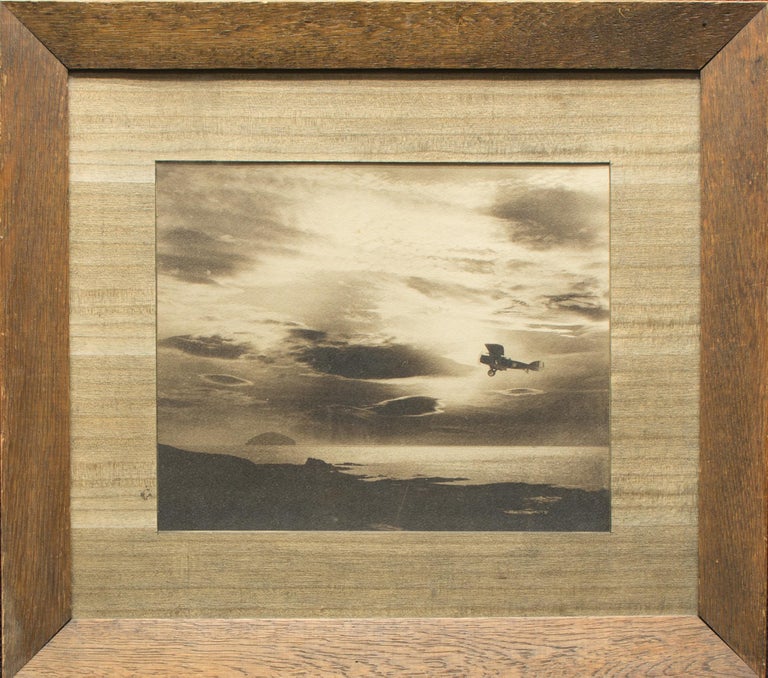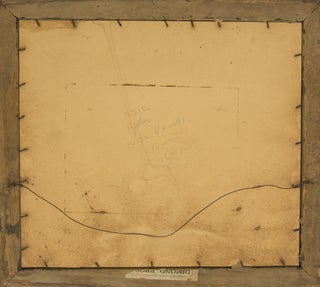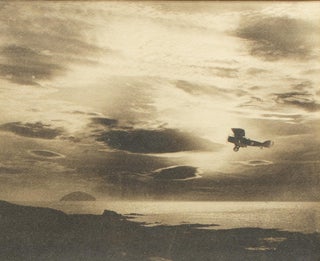A striking sepia-toned photograph of a Bristol F.2B biplane piloted by pioneering Australian aviator Captain Harry Butler while on an anti-submarine patrol off the coast of Scotland in late 1917 or 1918. At the time Butler was fighting-instructor at the Royal Flying Corps School of Aerial Gunnery and Fighting at Turnberry (now a Trump golf resort)
The sepia-toned print (image size 232 × 289 mm) is behind glass in its original timber frame (425 × 475 mm); the window mat is wood-grained, possibly cut from a veneer sheet. Remnants of the contemporary Adelaide framer's label ('Dimond Bros') are on the verso, along with the pencilled details of the job. Small scratch to the bottom portion of the image; one tiny spot; otherwise in fine condition.
The framer's pencilled notes indicate that the original client's name was Butler, almost certainly Harry Butler himself during his brief years in Adelaide between the war and his early death in 1924. An article from the Adelaide 'Advertiser' for Tuesday 21 May 1946 records Butler's own description of this scene in a pencilled note, dated 2 February 1918, uncovered on the verso of another example of this photograph. 'It was taken by our school photographer as I was on a Bristol Fighter about sunset to do a submarine patrol. You notice the Christmas card-looking island in the distance. That is known as Ailsa Craige [in fact Ailsa Craig], and is about halfway between here and Belfast'. 'Harry Butler [1889-1924] showed his enthusiasm and aptitude for mechanics by building models of primitive aircraft while still at school in Koolywurtie; he later accorded farm-work a lower priority than collaboration with a neighbour and lifelong mentor S.C. Crawford in building and flying one of Australia's early aeroplanes. Among the February 1915 candidates, Butler alone gained entrance as an aeromechanic to the Australian Flying School at Point Cook, Victoria. Commissioned three weeks after joining the Royal Flying Corps in 1916, he became fighting-instructor at Turnberry, Scotland, in 1917, and chief fighting-instructor at No. 2 Yorkshire School of Aerial Fighting in 1918. He alternated teaching with studying German aerial combat tactics over France, and he received the Air Force Cross in 1918' ('Australian Dictionary of Biography'). Our thanks to Mr Les Parsons for providing us with many important details regarding this image.
Item #107816
Price (AUD):
$1,650.00



